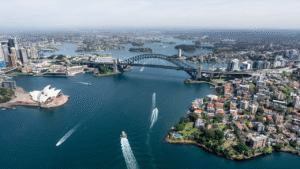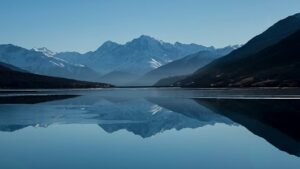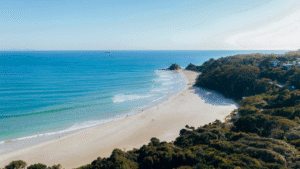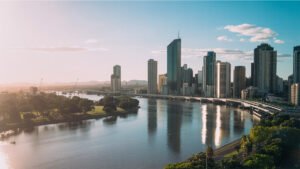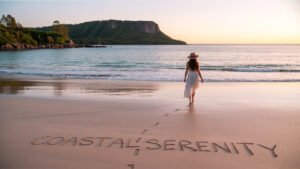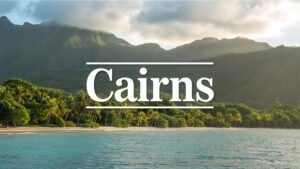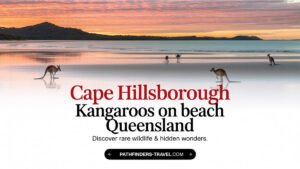Estimated reading time: 17 minutes
Key Takeaways
- Kakadu National Park spans approximately 20,000 square kilometers, making it Australia’s largest national park with dual UNESCO World Heritage status.
- The park is home to some of the world’s oldest Aboriginal rock art, with key sites including Ubirr and Nourlangie (Burrungkuy).
- Jim Jim Falls and Twin Falls are spectacular natural attractions with dramatic cliff faces and plunge pools, best visited during the dry season.
- The best time to visit Kakadu is during the dry season (May-October), when most areas are accessible and wildlife viewing is optimal.
- Kakadu’s landscapes include rugged escarpments, floodplains, rainforests, and wetlands that support extraordinary biodiversity.
Table of Contents
- Introduction
- Overview of Kakadu National Park
- Exploring the Ancient Aboriginal Rock Art
- Jim Jim Falls and Twin Falls Tour
- Best Time to Visit Kakadu National Park
- Frequently Asked Questions about Kakadu National Park
- Conclusion
- Additional Resources & Links
Introduction
Kakadu National Park Guide: Landscapes, Rock Art, and Seasons
Australia is home to some of the world’s most diverse landscapes, from coastal paradises to arid deserts, but few places capture the raw essence of the continent like Kakadu National Park. Located in the Northern Territory’s Top End, this vast wilderness represents Australia at its most authentic – wild, ancient, and culturally rich. Whether you’re planning a self-guided adventure through its rugged terrain or seeking an organized tour experience, this kakadu national park guide will help you navigate this remarkable destination.
Spanning an area roughly the size of Slovenia, Kakadu offers visitors the rare opportunity to witness landscapes that have remained largely unchanged for tens of thousands of years while connecting with the world’s oldest living cultural traditions. From dramatic escarpments and thundering waterfalls to tranquil billabongs teeming with wildlife, Kakadu promises both adventure seekers and cultural enthusiasts an unforgettable Australian experience.
Want to see this for yourself? Click here to watch the video from this point.
This comprehensive guide will take you through everything you need to know about Kakadu National Park – from its sweeping landscapes and ancient rock art galleries to practical tips on when to visit and what to experience. Whether you’re seeking to understand the profound cultural significance of this land or planning the logistics of your journey, we’ve got you covered.
Overview of Kakadu National Park
Discovering Australia’s Largest National Park
Kakadu National Park stands as Australia’s largest national park, encompassing a vast area of approximately 20,000 square kilometers in the Northern Territory. This immense protected area has earned the distinction of dual UNESCO World Heritage status for both its cultural heritage and natural values – a rare honor shared by only a handful of places worldwide. [SOURCE]
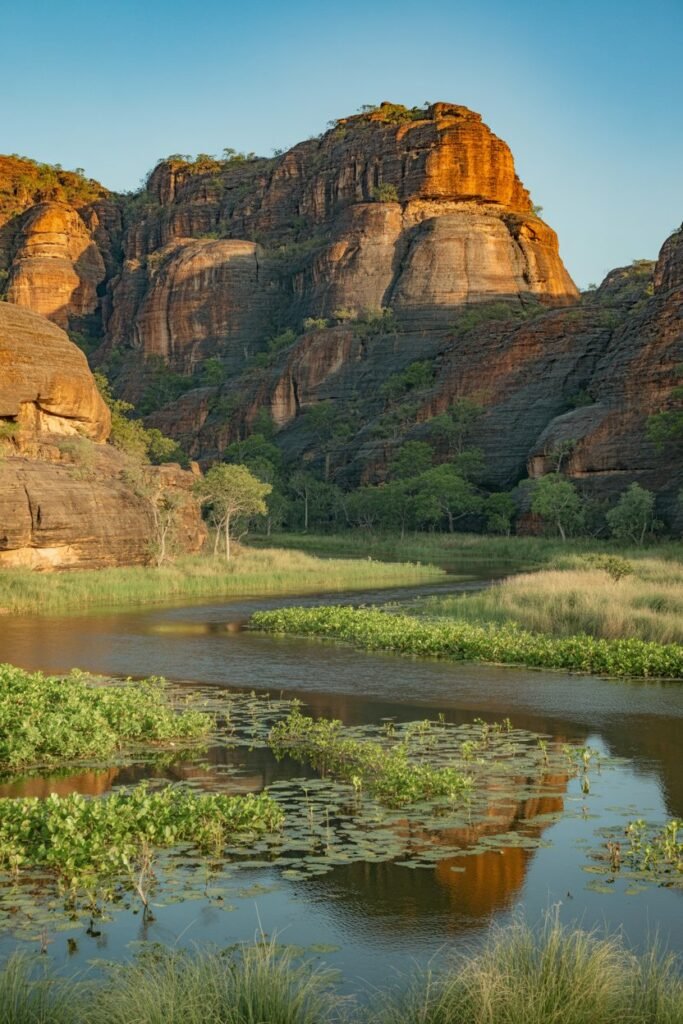
The landscapes within Kakadu are remarkably diverse, featuring dramatic escarpments that rise up to 330 meters, expansive floodplains that transform with the seasons, pockets of monsoon rainforests, and savanna woodlands. This environmental diversity supports an extraordinary range of wildlife, including:
- Over one-third of Australia’s bird species
- A quarter of the country’s freshwater fish species
- More than 2,000 plant species
- A rich collection of reptiles, mammals, and amphibians
The park’s Stone Country forms a rugged plateau that has been carved by water and time into an intricate maze of gorges, valleys, and outliers. Below these ancient escarpments lie the floodplains, which undergo dramatic seasonal transformations. During the wet season, these plains become vast inland seas, while in the dry season, they contract into networks of billabongs teeming with wildlife.
What makes this kakadu national park guide particularly relevant for visitors is understanding the park’s size and diversity. Even a week-long visit will only scratch the surface of what Kakadu has to offer, so planning your priorities is essential. Just as Sydney offers diverse attractions, Kakadu provides multiple environments to explore within a single park.
Equally significant is Kakadu’s status as a living cultural landscape. The Bininj/Mungguy people have continuously inhabited this land for more than 65,000 years, making it one of the longest continuous cultural connections to land anywhere on Earth. Today, their descendants continue to manage the park alongside Parks Australia through a unique joint management arrangement that combines traditional ecological knowledge with contemporary conservation practices.
This partnership has created one of the most successful Indigenous ranger programs in the world, where traditional owners share their deep understanding of the land while protecting its natural and cultural values. For visitors, this means opportunities to learn about the land through the eyes of those who have known it longest.
Exploring the Ancient Aboriginal Rock Art
Ubirr and Nourlangie Rock Art: Ancient Aboriginal Sites in Kakadu
Kakadu National Park houses some of the world’s oldest and most significant collections of ancient Aboriginal rock art, with thousands of sites scattered across its landscapes. These remarkable galleries provide an unbroken visual record of human life in the region dating back more than 20,000 years. [SOURCE]
The ancient aboriginal rock art kakadu is renowned for serves multiple purposes – it’s not merely decorative but functions as historical documentation, educational material, and spiritual expression. These artworks depict everything from everyday activities like hunting and gathering to complex spiritual beliefs, changes in the environment, and even first contact with European settlers.
Two of the most accessible and spectacular Aboriginal art sites in Kakadu are Ubirr and Nourlangie (Burrungkuy). These galleries showcase Indigenous culture through X-ray paintings, contact-era sketches, and Dreamtime stories.
Ubirr Rock Art Site
Located in the park’s northeast, Ubirr features several rock shelters adorned with paintings that span thousands of years. The galleries here showcase:
- The Rainbow Serpent – a powerful creation ancestor in Aboriginal culture
- X-ray paintings depicting animals with their internal organs and bone structures visible
- Images of Thylacines (Tasmanian tigers), which haven’t lived on mainland Australia for thousands of years
- Contact art showing European ships and people with guns and pipes
Beyond its ancient galleries, Ubirr rewards visitors with a climb to the Nadab floodplain lookout. This vantage point offers sweeping sunset panoramas over wetlands and escarpments, one of Kakadu’s most photographed spots, especially magical at sunset when the wetlands and escarpment are bathed in golden light. Much like the vistas from the Blue Mountains near Sydney, these views provide context for the landscape that inspired the artists.
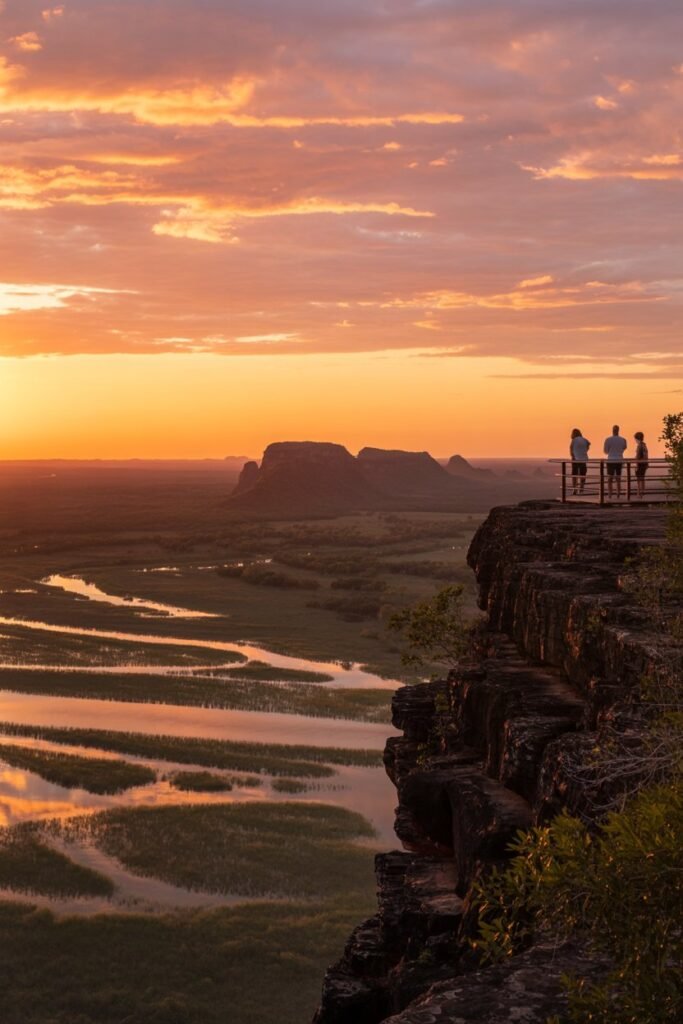
Nourlangie (Burrungkuy) Rock Art Site
The Nourlangie rock art site contains several distinct galleries, with the most famous being the Anbangbang Gallery. Here, visitors can see depictions of important creation ancestors including:
- Namarrgon (Lightning Man) – recognizable by the lightning bolts that connect his head, arms, and feet
- Namondjok – a significant ancestral figure
- Barrginj – Namondjok’s wife
The site also includes Anbangbang Shelter, which archaeological evidence indicates was occupied by Aboriginal people over 20,000 years ago. A moderately easy walking track circles the Nourlangie rock formation, providing access to additional art sites and the Gunwarddehwardde Lookout, which offers spectacular views of the escarpment.
What makes these sites so special is not just their antiquity but their continued cultural significance. For the Bininj/Mungguy people, these are not relics of a bygone era but living connections to their ancestors and traditions. The stories depicted in ubirr and nourlangie rock art continue to be passed down through generations, maintaining an unbroken cultural tradition that spans millennia.
When visiting these sacred sites, it’s important to show proper respect by staying on marked paths, not touching the artwork, and heeding any cultural restrictions. Ranger-guided talks, which run frequently during the dry season, provide invaluable context and deeper understanding of the art’s significance.
Jim Jim Falls and Twin Falls Tour
Exploring Jim Jim Falls by 4WD and Twin Falls Gorge Boat Shuttle
No Kakadu National Park guide would be complete without highlighting the park’s most iconic water features: Jim Jim Falls and Twin Falls. These magnificent waterfalls epitomize the raw power and beauty of Kakadu’s stone country and provide some of the most rewarding experiences for visitors.
Exploring Jim Jim Falls by 4WD or combining it with the Twin Falls gorge boat shuttle offers access to these remote treasures, which are located deep within the park’s rugged interior. Both falls cascade from the Arnhem Land escarpment into pools surrounded by monsoonal forest and massive sandstone cliffs that tower up to 150 meters high. [SOURCE]
Jim Jim Falls
Jim Jim Falls is Kakadu’s highest waterfall, with water plunging dramatically down sheer cliffs into a deep plunge pool below. The setting is nothing short of spectacular, with:
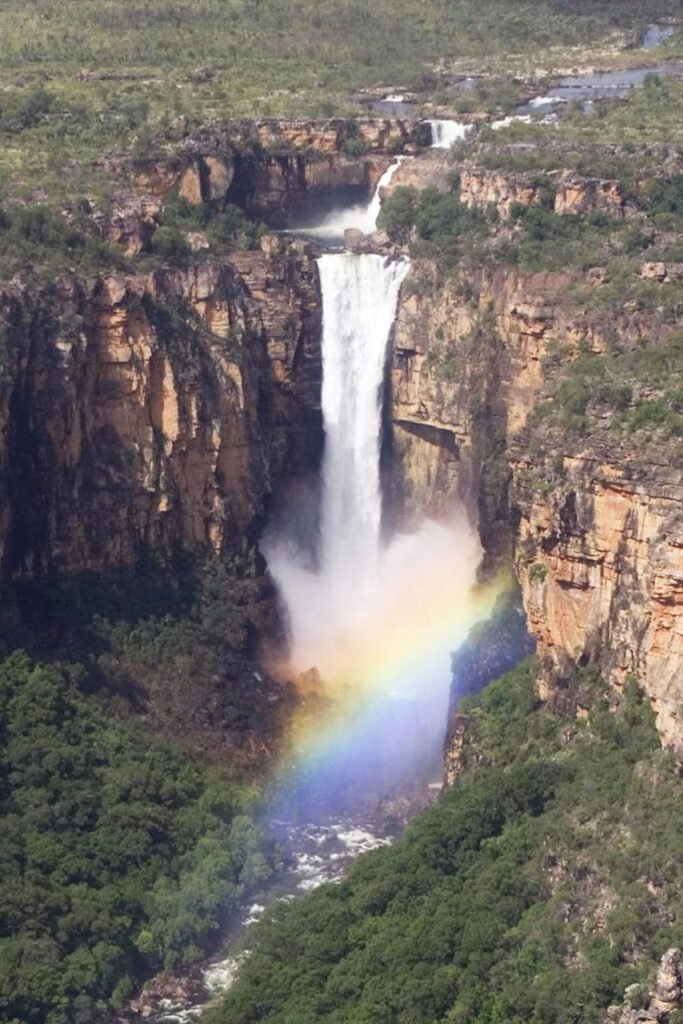
- Massive sandstone walls forming an amphitheater around the waterfall
- A pristine white sand beach at the base of the falls
- Crystal-clear water in the plunge pool (during the dry season)
- Ancient monsoon forest creating a verdant backdrop
During the wet season, Jim Jim Falls flows with tremendous force, creating a thundering spectacle visible only from the air. As the dry season progresses, the flow reduces but creates perfect conditions for swimming in the plunge pool, surrounded by the dramatic cliff face.
Twin Falls
Not far from Jim Jim Falls, Twin Falls offers an equally captivating but distinctly different experience. Here, water cascades over an ochre-colored cliff face into a series of pools set within a sandy gorge. The falls are often accessible by:
- A boat shuttle that operates during the dry season
- A sandy walking track from the boat drop-off point
- A viewing platform that provides excellent photographic opportunities
The gorge at Twin Falls, with its towering walls and peaceful pools, creates an almost cathedral-like atmosphere that many visitors find profoundly moving. While Cairns offers access to many tropical waterfalls, the remote setting and ancient landscape of Twin Falls provide a distinctly different experience.
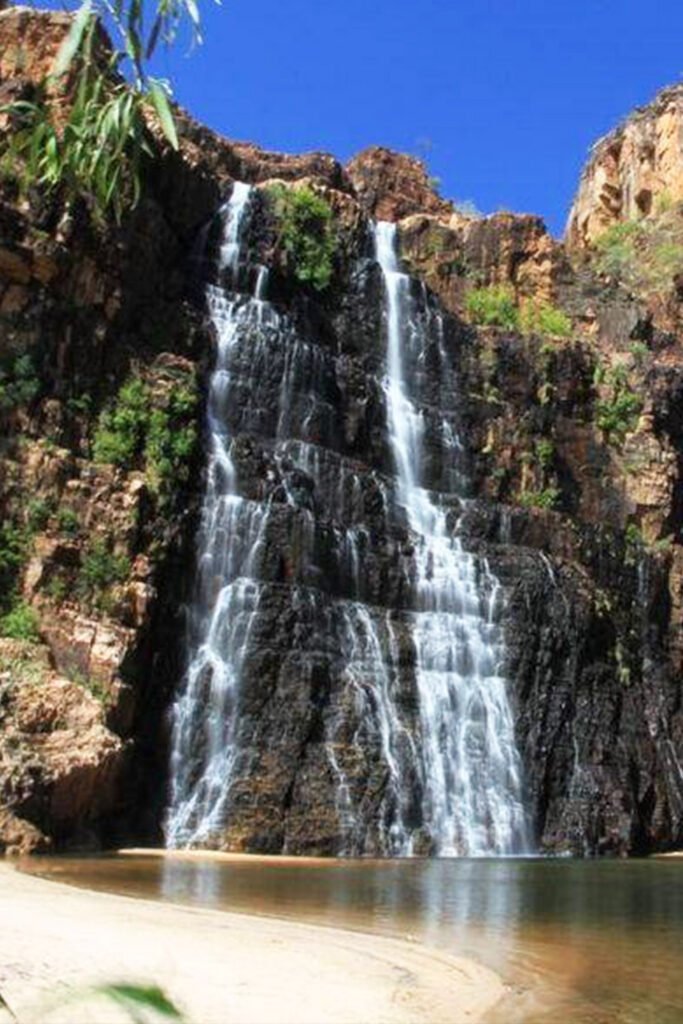
Tour Tips and Practical Information
For travelers heading into Kakadu’s stone country to reach Jim Jim and Twin Falls., here are some essential points to consider:
- Accessibility: The access road to both falls requires a high-clearance 4WD vehicle and can include creek crossings. Many visitors opt for organized tours if they don’t have suitable vehicles or experience.
- Seasonality: The falls are typically accessible from June/July to November, depending on when wet season waters recede. Access roads are usually closed during the wet season (November-April).
- Walking requirements: Reaching Jim Jim Falls involves a moderately difficult 2km return walk, including rock hopping and climbing over boulders. The Twin Falls walk is easier but requires a boat shuttle.
- Guided tours: Tours with Indigenous guides offer cultural insights that enhance the experience, explaining the significance of these places in traditional stories.
- Swimming safety: Always check current safety notices regarding crocodiles and water conditions before swimming.
The journey to these falls is as rewarding as the destination itself. The drive takes you through changing landscapes, from woodland savanna to stone country, offering glimpses of wildlife and the opportunity to appreciate the park’s diversity. For many visitors, the jim jim falls and twin falls tour ranks as their most memorable Kakadu experience, combining adventure, natural beauty, and cultural significance.
Best Time to Visit Kakadu National Park
Best Time to Visit Kakadu National Park: Seasonal & Monthly Travel Tips
Understanding the best time to visit Kakadu is crucial for planning a successful trip, as the park undergoes dramatic seasonal transformations that significantly impact accessibility and visitor experiences. Unlike southern Australia’s four seasons, Kakadu follows the traditional Bininj/Mungguy calendar with six distinct seasons, though visitors typically think in terms of the wet and dry seasons. [SOURCE]
Dry Season (May-October): Peak Visitor Period
The dry season is widely considered the best time to visit Kakadu for most travelers due to:
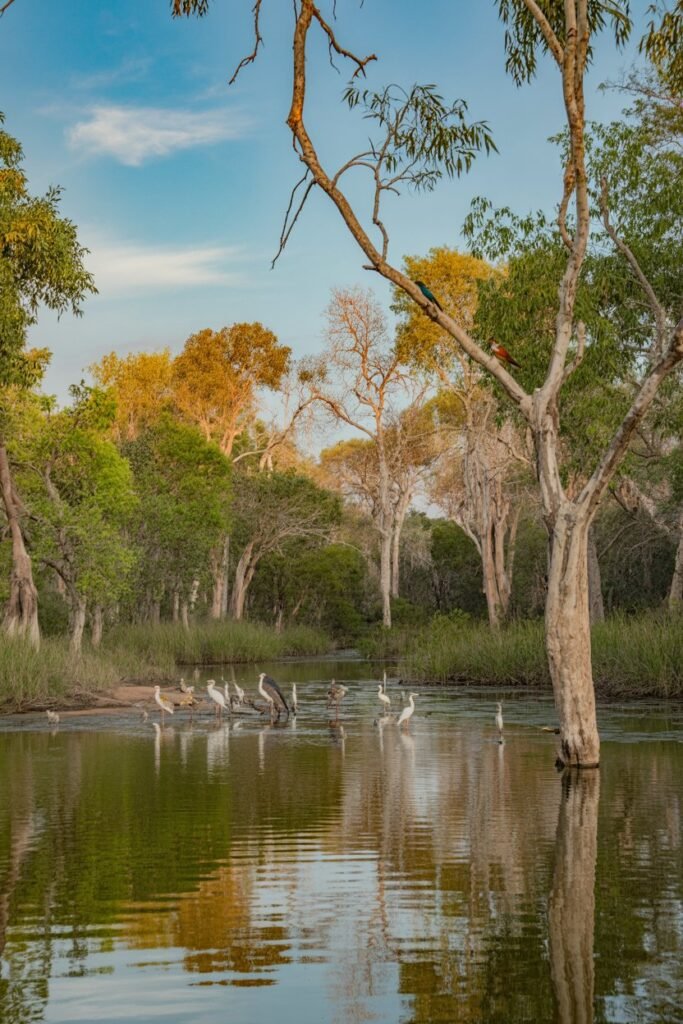
- Accessibility: Most roads, including those to Jim Jim and Twin Falls, are open (typically from June/July onwards)
- Weather conditions: Clear blue skies, comfortable temperatures (20-32°C), and low humidity
- Wildlife viewing: Animals congregate around shrinking water sources, making them easier to spot
- Guided activities: Full range of ranger programs and cultural tours available
- Swimming opportunities: Reduced risk from crocodiles at designated swimming spots (always check current safety notices)
Within the dry season, there are subtle variations worth noting:
- Early Dry (May-June): Landscape still green, some water flowing over falls, fewer visitors
- Kakadu in May – cooler weather, flowing waterfalls, and fewer visitors at Ubirr.
- Mid Dry (July-August): Peak tourist season, best all-round access, cooler nights
- Kakadu in July – peak dry season, open roads to Jim Jim Falls, and prime conditions for 4WD trips.
- Late Dry (September-October): Increasing heat, spectacular bird watching as waterbirds concentrate on remaining billabongs
- Kakadu in September – hotter days, spectacular birdwatching around shrinking billabongs.
July and August are particularly popular months, so advance accommodation bookings are essential during this period. Like Fraser Island’s popular season, Kakadu can get busy during these peak months.
Wet Season (November-April): The Dramatic Transformation
While many tourists avoid the wet season, it offers unique experiences for those willing to adapt to its challenges:
- Landscape transformation: Floodplains fill with water, creating vast inland seas
- Thunderstorms: Spectacular lightning displays and dramatic cloud formations
- Waterfalls: Falls flow at maximum capacity (though most are only visible via scenic flights)
- Lush growth: Explosion of plant life and vibrant greenery across the landscape
- Bird life: Increased activity with migratory species arriving
- Fewer visitors: More solitude and space at accessible attractions
However, wet season visitors should be aware of significant limitations:
- Many roads close due to flooding, including access to Jim Jim and Twin Falls
- High humidity and temperatures (30-37°C)
- Regular heavy rainfall and potential flooding
- Reduced tour options and ranger programs
- More mosquitoes and other insects
January and February typically see the heaviest rainfall and most extensive flooding. Similar to planning visits to see kangaroos at Cape Hillsborough, timing is everything when visiting Kakadu.
Transitional Periods: The “Shoulder Seasons”
The transitions between wet and dry seasons offer interesting compromise options:
- April-May (Yegge): Cooling temperatures, reducing water levels, and decreasing humidity
- October-November (Gunumeleng): Building heat, spectacular lightning storms, and fewer tourists
These periods can provide good value and unique experiences, though with less predictable conditions.
Planning Tips Based on Your Interests
When determining the best time to visit kakadu for your specific interests, consider:
- For rock art enthusiasts: The dry season offers easier access to Ubirr and Nourlangie, plus ranger-guided talks
- For photographers: Early dry season for greenery and flowing waterfalls; late wet season for dramatic skies and reflections
- For wildlife spotting: Late dry season when animals gather at remaining waterholes
- For birdwatchers: Early dry season (May-June) or wet season for migratory species
- For waterfall chasers: Mid-dry season for swimming at the base of accessible falls; wet season for aerial tours of falls at full capacity
- For budget travelers: Shoulder seasons offer lower accommodation rates and fewer crowds
Whatever season you choose for your visit, checking road conditions, park alerts, and weather forecasts before and during your trip is essential. The Kakadu National Park website and visitor centers provide up-to-date information that should form the basis of your daily planning when in the park.
Frequently Asked Questions about Kakadu National Park
What is the best time and season to visit Kakadu National Park?
The dry season from May to October is generally considered the best season to visit Kakadu National Park, offering open roads and easier access to key sites.
How do I get to Kakadu National Park and travel around the park?
Kakadu National Park is about a three-hour drive from Darwin via the Arnhem Highway, with sealed roads to the entrance. Once inside, many key attractions can be reached by car, but some areas require a high-clearance 4WD vehicle, particularly Jim Jim Falls and Twin Falls. Visitors without a 4WD often join guided tours that include transport, cultural interpretation, and easier access to remote sites.
What should I pack for a trip to Kakadu National Park?
Pack lightweight clothing for hot weather, sturdy walking shoes, a wide-brimmed hat, sunscreen, insect repellent, and enough water for day trips. Carry plenty of drinking water and snacks, as services are limited within the park. If visiting in the wet season, bring waterproof gear and be prepared for sudden downpours. For the dry season, layers are helpful, as evenings can be cool. Always check safety advice about crocodile areas before swimming.
What safety concerns should visitors know about in Kakadu National Park?
Yes, visitors must take crocodile safety seriously and follow ranger advice on swimming and walking tracks. Swim only in areas marked safe and always follow ranger advice. Temperatures can be extreme, so staying hydrated is crucial. Hikes like those to Jim Jim Falls involve rock scrambling, so suitable fitness and footwear are necessary. During the wet season, road closures and flooding are common—checking daily park alerts before traveling is essential for safety.
How many days do I need to explore Kakadu National Park?
A minimum of three days is recommended to see Kakadu’s highlights such as Ubirr and Nourlangie rock art, wetlands, and the Jim Jim Falls and Twin Falls tour. A week allows for a deeper exploration of the park’s six regions and diverse environments. Because of its size—about 20,000 square kilometers—planning your itinerary in advance helps maximize your time and ensures you don’t miss key experiences like guided cultural walks or seasonal wildlife viewing.
Conclusion
Embracing the Full Kakadu Experience
Kakadu National Park is more than a destination; it is a vast cultural and ecological landscape where ancient traditions meet dramatic natural beauty. From Aboriginal rock art at Ubirr and Nourlangie to seasonal spectacles like Jim Jim Falls and Twin Falls, the park invites visitors to explore its diverse regions with both respect and curiosity.
Its dual UNESCO World Heritage status reflects how culture and environment are inseparably linked here. Traveling through floodplains, escarpments, and billabongs, visitors encounter wildlife, stories, and places that have shaped human history for tens of thousands of years.
Planning your journey with seasonal conditions in mind ensures a rewarding experience, whether you join guided cultural walks or take a self-drive adventure. Combining Kakadu with nearby destinations such as Litchfield National Park can also extend your exploration of the Northern Territory’s Top End.
For those who approach Kakadu with patience and openness, the park offers moments of discovery that leave a lasting connection to one of the world’s most significant landscapes.
As you plan your visit to Kakadu, consider watching more of Pathfinders Travel YouTube Channel to enjoy their Wonders of the world Travel Documentaries in 4K resolution, which can give you a better visual understanding of what awaits in this magnificent region.
Kakadu National Park stands as a testament to Australia’s commitment to preserving both natural environments and cultural heritage. For visitors willing to venture beyond the tourist hotspots of coastal destinations like the Whitsundays, Kakadu offers an experience of Australia that is profound, authentic, and unforgettable.
Additional Resources & Links
Planning Tools for Your Kakadu Adventure
To help you make the most of your Kakadu experience, we’ve compiled these valuable resources:
Official Information
- Park Maps and Guides: Download detailed maps and seasonal guides from the official Kakadu National Park website. [SOURCE]
- Road Condition Reports: Access up-to-date information on road openings and closures throughout the park.
- Park Alerts: Check for current notifications regarding area closures, safety concerns, or special events.
Tour and Accommodation Options
- Ranger-guided Programs: Free activities run by park rangers during the dry season, including cultural walks and talks.
- Indigenous Cultural Tours: Experience Kakadu through the eyes of its Traditional Owners with guided tours by local Aboriginal operators.
- Accommodation Directory: From campgrounds to luxury lodges, find the right place to stay during your visit.
Preparing for Kakadu’s Conditions
- Seasonal Packing Guide: What to bring for different times of the year, including wet season essentials.
- Safety Information: Important advice on crocodile safety, heat management, and remote area preparedness.
- Photography Tips: Make the most of Kakadu’s dramatic landscapes and lighting conditions.
Suggested Itineraries
- 3-Day Highlights Tour: Essential experiences for short-stay visitors.
- 7-Day Immersion: A comprehensive exploration of Kakadu’s diverse regions.
- Wet Season Specialties: Making the most of a visit during the monsoon months.
Regional Connections
- Darwin to Kakadu: Transport options and stops along the way.
- Combining with Litchfield: How to include both national parks in your Northern Territory adventure.
- Arnhem Land Access: Information on permits and tours to this adjacent Aboriginal territory.
By utilizing these resources and planning tools, you’ll be well-equipped to create a Kakadu experience that suits your interests, timeframe, and travel style. Remember that flexibility is key when exploring this dynamic landscape, as seasonal conditions and cultural activities may create unexpected opportunities or limitations during your visit.


